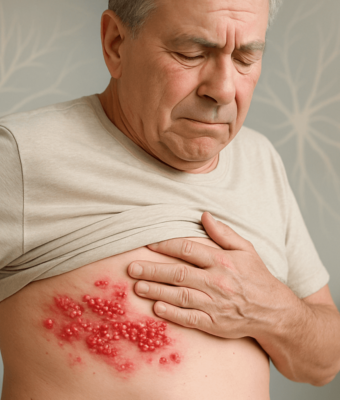Recommendations made by American Society of Hematology in the 2020 guideline are evidence-based and graded according to the GRADE approach
Introduction1
Venous thromboembolism (or VTE) is a serious condition associated with the formation of blood clots in veins. VTE commonly manifests as deep vein thrombosis (DVT) and pulmonary embolism (PE). DVT mostly occurs in the lower extremities, but it is also known to affect the upper extremities. PE, on the contrary, usually starts with lung tissue damage and manifests in one-third of all patients with a new diagnosis of VTE.
Epidemiology1
Every year, approximately 3 to 6 lakh cases of VTE are reported in the US alone. The incidence of VTE increases with aging, with a greater number of cases being reported in individuals who are 80 years or older. While VTE is known to affect people of all ethnicities and races, data from most clinical studies point to a higher incidence in black people. Individuals of Asian descent, however, have a lower rate of incidence compared to others.
Patients with acquired risk factors (a provoked event associated with the initial event) have a higher chance of developing recurrent VTE. In patients without acquired risk factors, the risk of recurrent VTE increases with time after discontinuation of anticoagulant therapy.
Moreover, currently or recently hospitalized individuals, residents in long-term care facilities, and patients undergoing surgical procedures, have been identified as a subset of individuals with a higher risk for VTE.
Eventually, patients with DVT and PE can develop serious complications. While patients with DVT can develop post thrombotic syndrome (PTS), patients with PE carry the risk of developing chronic thromboembolic pulmonary hypertension.
Therapy and management1
Treatment with anticoagulants is known to be effective in majority of patients. Moreover, other therapies like vitamin K antagonists (VKA) and low molecular weight heparins (LMWH) are also used for treatment. But the risk of developing major bleeding events is higher in patients taking vitamin K antagonist therapy as compared to patients on oral anticoagulants (DOACs), who have ~30% lower relative risk of bleeding events.
The following flowchart summarizes the phases in the therapeutic management of patients with a new diagnosis of VTE:

Phases in therapeutic management for VTE1
2020 American Society of Hematology guidelines1
In recent times, four guidelines on the management of patients with VTE have been published. In 2020, the American Society of Hematology (ASH), world’s largest professional society working in the area of blood disease, also published an evidence-based guideline for the management of DVT and PE, particularly in patients without cancer. Published in October 2020 in the Blood Advances journal, this guideline contains a total of 28 ‘strong’ and ‘conditional’ recommendations.
Mainly prepared for patients, general practitioners, hematologists, hospitalists, vascular interventionalists, other clinicians and policy makers, the recommendations are based on the latest evidence from systematic reviews, randomized controlled trials, and observational studies.
Consistent use of systematic reviews, the GRADE (Grading of Recommendations Assessment, Development and Evaluation) approach for qualifying the strength of evidence, and Evidence to decision (EtD) frameworks imparts these guidelines the much-needed transparency and sets them apart from other guidelines. Moreover, these guidelines also make use of marker states to estimate the relative importance of key treatment outcomes in patients.
The ASH 2020 guidelines make use of clear terminology (the recommendations are labelled as ‘suggested’ for a conditional recommendation and ‘recommended’ for a strong recommendation) to reflect the distinct clinical intention to treat the two phases of VTE management.
These recommendations, categorized under ‘Initial management,’ ‘Primary treatment,’ ‘Secondary prevention,’ and ‘Treatment of recurrent events,’ are summarized below.
Initial management: Up through the first week1
Recommendation 1
- Home treatment is suggested for patients with uncomplicated DVT.
- This recommendation, however, does not apply to patients with other comorbidities, lack support at home, poor history of compliance, etc.
- Since data corroborating this evidence is of low quality, this recommendation is conditional, and needs to be individualized.
Recommendation 2
- ASH suggests home treatment for patients with PE having very low risk of complications.
- Evidence in favor of this recommendation is of very low quality, highlighting the need for well-designed prospective studies to confirm the safety and efficacy of home treatment in this patient category
Recommendation 3
- For treating patients with DVT and/or PE, use of direct oral anticoagulants (DOACs) is suggested over VKA.
- Though the evidence supporting reduced bleeding risk with DOACs is of high certainty, lack of benefits for VTE outcomes resulted in a conditional recommendation.
Recommendation 4
- The ASH panel does not suggest using one DOAC over the other for treating patients with DVT and/or PE.
- Selection of specific DOACs may be driven by the influence of factors like daily dosing requirements, costs, etc.
- Lack of conclusive evidence warrants prospective research to compare different DOACs in specific patient subgroups.
Recommendation 5
- In patients with proximal DVT, the ASH panel suggests only anticoagulation therapy over thrombolytic and anticoagulation use.
- Evidence of clinical outcomes demonstrating improvements with thrombolytic therapy is limited.
Recommendation 6
- In patients with PE and hemodynamic compromise, the ASH panel recommends thrombolytic and anticoagulation therapy over anticoagulation treatment alone.
- This is because of the high risk of mortality in this subset of patients with PE despite the low-certainty of evidence supporting this recommendation.
Recommendation 7
- The use of anticoagulation alone is suggested in patients with PE who have echocardiography and/or biomarkers compatible with right ventricular dysfunction without hemodynamic compromise.
- The recommendation is conditional because of the low risk of mortality and low certainty of the evidence on effects.
Recommendation 8
- Catheter-directed thrombolysis is suggested for patients with extensive DVT, over systemic thrombolysis.
Recommendation 9
- For patients with PE requiring thrombosis, systemic thrombosis is suggested over catheter-directed thrombosis.
Recommendations 10 and 11
- The ASH panel suggests using anticoagulation alone (over anticoagulation plus insertion) for patients with proximal DVT and significant preexisting cardiopulmonary disease as well as for patients with PE and hemodynamic compromise.
Primary treatment: For a minimum of 3 to 6 months for all patients with VTE1
Recommendations 12, 13, and 14
- The ASH panel suggests using a shorter course of anticoagulation for primary treatment (3-6 months) over a longer course (6-12 months) for primary treatment of patients with DVT and/ or PE, provoked by,
- a transient risk factor (Recommendation 12),
- a chronic risk factor (Recommendation 13) or,
- Unprovoked (Recommendation 14)

ACH 2020 guidelines provide evidence-based recommendations on the use of anticoagulant therapy for DVT and PE
Secondary prevention: After completion of the initial course of anticoagulant therapy1
Recommendations 15, 16, and 17
- For patients with unprovoked DVT and/or PE, the ASH panel suggests against the routine use of
- prognostic scores (Recommendation 15)
- D-dimer testing (Recommendation 16)
- ultrasound to detect residual vein thrombosis (Recommendation 17), to guide the duration of anticoagulation.
Recommendation 18
- Indefinite thrombotic therapy is suggested after the completion of primary treatment, in patients with DVT and/or PE with a provoked risk factor.
Recommendation 19
- In patients with unprovoked DVT or PE who have completed primary treatment, the ASH panel suggests indefinite use of anticoagulation over discontinuation of treatment.
Recommendation 20
- Use of anticoagulation over aspirin is suggested in patients with DVT and/or PE who continue to receive secondary prevention.
- Moderate evidence suggests reduced risk of recurrent VTE with anticoagulant compared to aspirin.
Recommendation 21
- For patients who continue VKA therapy as a secondary prevention, use of an international normalized ratio range of 2.0 to 3.0 over a lower range is recommended.
Recommendation 22
- In patients with DVT and/or PE who continue to use DOAC for secondary prevention, use of standard or lower-dose DOAC is suggested.
- Additional research can categorize DOAC use for patient subtypes.
Recommendation 23
- Use of LMWH is suggested in patients who present a new VTE during therapeutic treatment with a VKA.
Recommendation 24a
- In patients with DVT and/or PE, due to transient risk factors and a history of previous unprovoked VTE (or provoked by chronic risk factors), continued use of antithrombotic therapy after primary treatment is suggested.
Recommendation 24b
- In patients with DVT and/or PE, due to transient risk factors and history of previous VTE also due to transient factors, stopping anticoagulation therapy after primary treatment is suggested.
Recommendation 25
- Indefinite antithrombotic therapy is recommended for patients with a recurrent unprovoked DVT or PE, after primary treatment.
Recommendation 26
- The ASH panel suggests suspending aspirin use for the duration of anticoagulation therapy in patients with DVT and/or PE with stable cardiovascular disease using aspirin for cardiovascular risk modification
Recommendations 27 and 28
- ASH suggests against the routine use of compression stockings for patients
- with (Recommendation 27), or
- without (Recommendation 28) increased risk for PTS.
Conclusion
Although the recommendations have been developed mostly for the North American population, these have a global scope. By following the “Adolopment” model of guideline adoption, adaptation, and development using the EtD frameworks accompanying each recommendation, they may be customized for application in the local and regional contexts. Besides, the recommendations, particularly those based on low- or very-low-certainty evidence, leave room for updating based on newer evidence in the future.
Reference
- Ortel TL, Neumann I, Ageno W, Beyth R, Clark NP, Cuker A, et al. American Society of Hematology 2020 Guidelines for management of venous thromboembolism: Treatment of deep vein thrombosis and pulmonary embolism. Blood Advances. 2020;4(19):4693–738.







